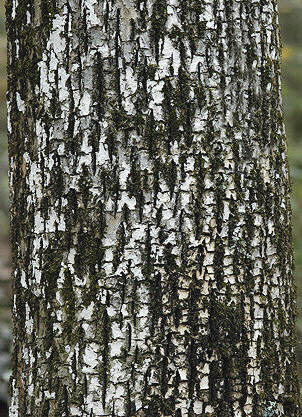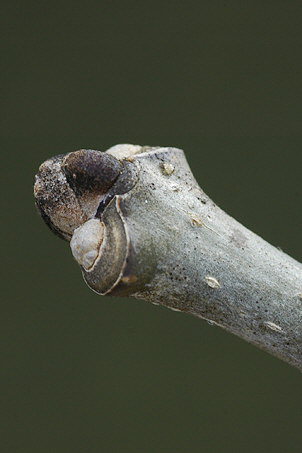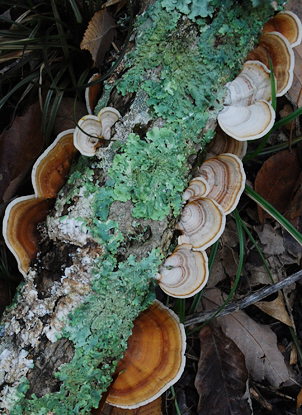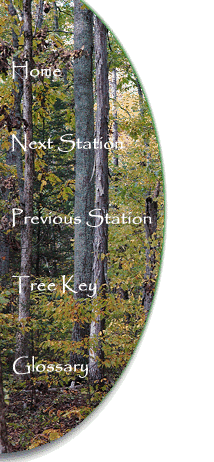| |
|
| |
 |
| |
White Ash Leaf |
Identification:
Each leaf is composed of 5-9 leaflets.
The leaves are pinnately
compound,
opposite and have a
total length between 8 and 12 inches. The leaves are paler
below and lightly hairy. The White Ash leaflets
are entire below the midpoint of the leaflet. Compare
the leaflet shape with that of the Shagbark Hickory. Note that
the White Ash leaflets are stalked, unlike the leaflets of the
Shagbark Hickory. The White
Ash leaves and branches are opposite, whereas the Shagbark Hickory
leaves and branches are alternate.
| |
|
 |
|
|
White Ash Bark |
The bark of the White Ash is
gray-brown, thick, and is deeply furrowed with a distinctive
diamond-shaped pattern of ridges. This is a good
identification characteristic in all seasons for this tree.
| |
|
| |
 |
| |
White Ash Terminal Bud |
| |
|
| |
 |
| |
White Ash Lateral Bud |
The twigs of the White Ash are
stout, gray or brown or sometimes greenish brown. The twigs
have pale lenticels. The upper
edge of the leaf scars have a deep notch. The
terminal bud is
about 1/4 inch long and appears powdery. The
buds have four to
six imbricate scales. Smaller twigs are
round in cross section. Be sure to compare the round twigs of
the White Ash to the twigs of the Blue Ash, which are 4-sided
(square) in cross section.
Other Uses
and Lore: Although not as strong as hickory, the wood has
a good combination of strength and lightness. It is much used
for the "D" handles of shovels and spades, and is the wood of choice
for oars and baseball bats.
The Trail From
Station Two to Station Three
 |
| Shelf Fungi
and Lichen |
The are also
Blue Ashes in the vicinity of Station Two. We will take a
close look at the Blue Ash at Station Eight, but for now you might
look carefully at the twigs of young trees in this area. Some
of them may have the characteristic 4-sided (square) cross-section
of the Blue Ash. From Station Two, the trail descends slowly
along the ridge to the West Fork of the Stones River. Look for
colorful shelf fungi and lichen along the sides of the trail.
Station Three is not far and will be on the left hand side of the
trail.
|

